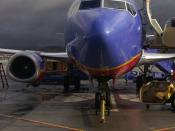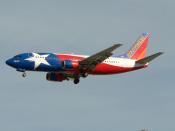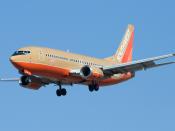Southwest started its service in 1971. It becomes famous by using its pricing strategy of cheap fares backed by seriously controlling costs. The central business of Southwest is the short-haul domestic route. The airplanes of Southwest are always on time which make the customers very delighted.
Southwest Airlinesáï used market penetration pricing strategy with low-fare, no frills, low cost service on relatively short flights. Moreover, it also provides benefits to customers such as simple scheduling, ticketless travel, and point-to-point service. It used this market-entry strategy to compete and discourage other companies because they realized the market for flights is very big, but the demand is highly elastic, depending on the price of the fares. It also finds that the more passengers Southwest has, the lower the cost per unit.
In order to offer low prices and earn profit, Southwest tried very hard to control its cost. Pricing of a product also should consider its cost, so Southwest and other airlines must control fixed cost and variable cost.
Although fixed cost is hard to change in the short run, it still can reduce it in the long run. Fixed cost is the cost that remains constant regardless of how many passengers. Southwest tried to use the airplanes on resources as often as possible in order to increase revenue and pay off the fixed cost. Therefore, it emphasized rapid turnaround time which allows its planes to be in the air 3 more hours more than other airplanes in other airlines. Variable cost can be controlled in the short run by changing demand of flights. Southwest reduces variable cost by not offering assigned seating, in-flight meals, a first-class section, or interairline luggage transfers to the passengers. It also reduces employee cost and spare partáïs inventories by using only single type of...


